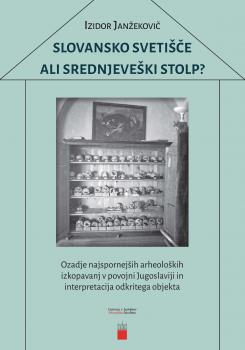Slovansko svetišče ali srednjeveški stolp? Ozadje najspornejših arheoloških izkopavanj v povojni Jugoslaviji in interpretacija odkritega objekta
Ključne besede:
arheološka izkopavanja, Ptuj, povojna Jugoslavija, kontinuiteta, prelomKratka vsebina
Knjiga v treh delih obravnava enega izmed najtemeljnejših problemov arheologije pri nas, in sicer »staroslovansko svetišče« na Ptuju. V prvem delu avtor prikaže zanimivo ozadje odkritja tega zloglasnega Objekta v pestrih in »podivjanih« prvih letih povojne Jugoslavije med velikimi arheološkimi izkopavanji na ptujskem gradu. Za interpretacijo Objekta kot »staroslovanskega svetišča« je bila ključna nemška okupacija in poskus ponemčenja južne Štajerske ter drugih okupiranih ozemelj v Sloveniji. Izkopavanja avtor postavi v širši okvir povojne gradnje države in nacije (Jugoslovanov), ko so tudi arheologi in zgodovinarji pomagali postavljati novo državo na nove temelje. Drugi del sledi Heraklitovemu načelu: »Boj je oče vsega in vsemu kralj!« Problem staroslovanskega svetišča na ptujskem gradu je predstavljen s soočenjem argumentov glavnih akterjev, Josipa Korošca in Franja Baša. Avtor preuči temeljne trditve pro et contra interpretacije Objekta kot svetišča, s tem da doda rezultate novejših raziskav in relevantne sorodne primere iz bližnje ter širše okolice. Naposled se avtor posveti še ključnemu zgodovinskemu vprašanju kontinuitete in preloma. Tretji del se namreč odmika od vprašanja »svetišča« in se dotakne širšega konteksta Ptuja v času od pozne antike do visokega srednjega veka.
Downloads

Najavljeno
Licenca

To delo je licencirano pod Creative Commons Priznanje avtorstva-Deljenje pod enakimi pogoji 4.0 mednarodno licenco.

